
Many of us would be aware of the New7Wonders of Nature campaign, and that our very own Bukit Timah Nature Reserve is currently still in the running to be nominated as one of the world's so-called top natural wonders.
Frankly, I'm a little ambivalent about all this. It's difficult to pick favourites out of all the countless sites of natural beauty and incalculable conservation and scientific value. While it is likely that this campaign has raised awareness of many lesser-known sites, at the same time, I don't like to draw comparisons between the various nominees. In my opinion, each nominee is a priceless wonder, and the loss and degradation of any of them would be a monumentous tragedy for all of mankind. Similarly, just because countless sites are not in the list, does not mean that they are any less deserving of conservation efforts to ensure that future generations will still be able to revel in their beauty and magnificence.
Through a submission to Tomorrow.sg, I came to know of this blog post denigrating the nomination of Bukit Timah Nature Reserve.
I can't decide if I should laugh or cry when I read this. A jogging track with a couple of misfit monkeys running to be one of the wonders of the world. Against the likes of the Grand Canyon and Niagara Falls, Bukit Timah is like wood shavings of recycled timber from a dead log somewhere in Tasmania.
The writer then goes on to suggest that our network of ERP gantries would qualify as a far more suitable candidate, never mind that the whole campaign is focusing on natural wonders of the world.
I'm not amused at all.
It's not worth getting worked up over a blog post that looks as if not a lot of thought was put into it, but it is more than a little upsetting that someone should so callously belittle Bukit Timah Nature Reserve.
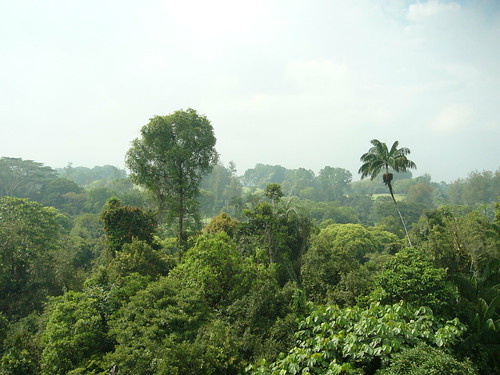
(Photo by lowyensia)
It is true that compared to many, or even most of the other nominees, the forests of Bukit Timah pale in comparison. How could they possibly measure up against the mighty forests of the Congo or Amazon? Even if we restrict our comparison to sites in Peninsular Malaysia, how could Bukit Timah ever match places like Panti Forest, Endau-Rompin, and Taman Negara (all of which are, by the way, not listed among the nominees) in terms of size and biodiversity?
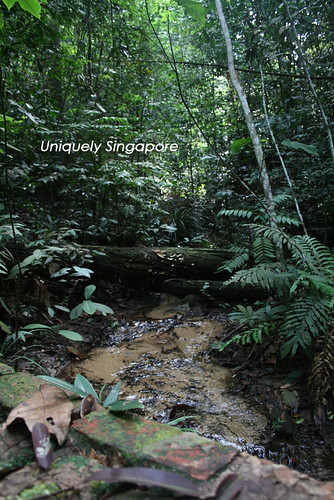
(Photo by November)
Frankly, I doubt Bukit Timah has any real chance of being recognised as one of the 7 natural wonders of the world. But it does not mean that it is nothing more than a mere "jogging track with a couple of misfit monkeys".

(Photo by Heidi Donat)
It honestly angers me when people fail to recognise the importance and value of our natural heritage. I might not be very well-acquainted with Bukit Timah, but dismissing its value in such a manner is downright rude, and speaks a lot about the ignorance of the person making such a statement, and his attitude towards conservation of our nation's fragile biodiversity. It's a metaphorical slap across the face for a lot of people, from casual nature lovers to all the volunteers and staff involved in nature conservation in Singapore, all the way to scientists and researchers attempting to unlock the secrets of our natural world.
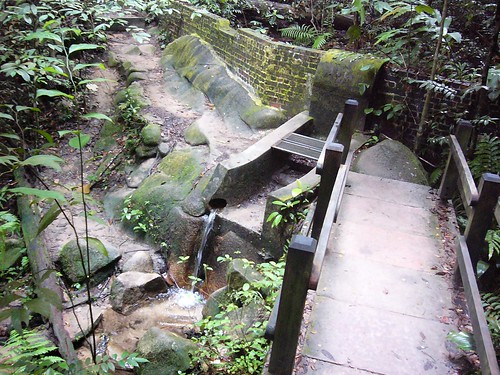
(Photo by rubenerd)
As one of Singapore's last remaining substantial patches of primary rainforest, Bukit Timah is the final refuge of many species not found elsewhere in Singapore, possibly not even within the Central Catchment Area on the other side of the Bukit Timah Expressway (BKE). Some of these species are endemic to Singapore, meaning that barring any undiscovered populations hiding in Johor, these species are not even found anywhere else in the world! To borrow a slogan from the Singapore Tourism Board (STB), how's that for something that's truly uniquely Singapore?


Left: Peters' bent-toed gecko (Cyrtodactylus consobrinus). Although also known from southern Thailand, Peninsular Malaysia, and Sumatra and Borneo, here in Singapore, its distribution is restricted to the Bukit Timah Nature Reserve. (Photo taken from Ecology Asia);
Right: Leaf-dwelling daddy-long-leg spider (Uthina atrigularis). This spider is known only from Singapore, and has been found only within the Bukit Timah Nature Reserve. (Photo by spilopterus);
Despite the small size of Bukit Timah Nature Reserve, new and surprising discoveries are being made, even in the 21st century, reminding us that we are still far from creating a comprehensive catalogue of all the species found in its forests. The thorny tree frog (Theloderma horridum) and red-cheeked flying squirrel (Hylopetes spadiceus), both first reported in 1996, are new records for Singapore, and both species are currently known only from the Bukit Timah Nature Reserve.

Thorny tree frog (Photo taken from Herpweb.net)
Although Bukit Timah Nature Reserve is heavily impacted by human activities going on within and around it, and its long-term survival is a big question mark, it does serve as an example of how it is possible to strike some sort of balance between urban development and conservation; the two need not necessarily be antithetical to each other. There are few places in the world where you can set off from a bustling shopping district and end up in the middle of a tropical rainforest in less than an hour.

(Photo by Marinus van Opzeeland)
While virtually all of the megafauna has vanished (a trend that is now occurring in other Southeast Asian forests), and the ecology of the forest has shifted to become one largely dominated by invertebrates, Bukit Timah is an invaluable site for research, as people attempt to discover how the rainforest ecosystem can subtly shift over time due to upheavals and changes to the local biodiversity. Research carried out in Bukit Timah can enable us to make predictions on the future of tropical forests in the region, and possibly even the world, where deforestation, hunting, fragmentation, introduced species and climate change are all altering the ecology of these vital habitats in significant ways. Our biodiversity might seem impoverished and depauperate in comparison to the remaining forests in Malaysia and Indonesia, but it does not mean that what little forest that remains is worthless.

(Photo by Ria)
These forests are also notable for the very fact that in the mid-19th century, from 1854 onwards, the famous naturalist Alfred Russel Wallace, spent some time collecting specimens in Bukit Timah. He subsequently wrote, "In all my subsequent travels in the East I rarely if ever met with so productive a spot".
The Alfred Russel Wallace Website - Bukit Timah Nature Reserve, Singapore
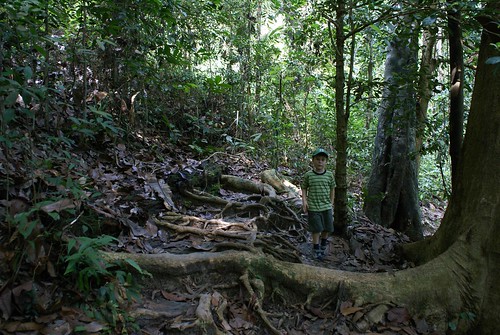
(Photo by Ubbez)
Based on all these various aspects, from Bukit Timah's value as a part of our nation's fragile natural heritage, to its usefulness as a research site with implications for rainforest management policies worldwide, to its historical significance as one of the stomping grounds of one of the forefathers of the theory of evolution, such an insensitive snub is an affront to countless people who have visited Bukit Timah Nature Reserve, and who have, in one way or another, realised its importance and value, not just to Singapore, but to the world at large.
Yes, Bukit Timah Nature Reserve probably cannot compare to the Grand Canyon and Niagara Falls. But comparing all these sites with one another is a moot point. They are all majestic places of grandeur and beauty, and this whole campaign seems more like a game of one-upmanship. If it ever comes to a stage where we are forced to shortlist some locations that are most worthy of being saved, it probably hints that our natural world, and the ecosystems which support us, are probably in extremely dire straits by then.
I wonder if this person is representative of Singaporeans' attitudes towards nature. If he can so readily overlook Bukit Timah Nature Reserve's importance as one of Singapore's most prominent and well-known nature areas, it simply does not bode well for all our other wild places, many of which do not share the same iconic status and level of protection as Bukit Timah. What would this person say about Chek Jawa, or Sungei Buloh?
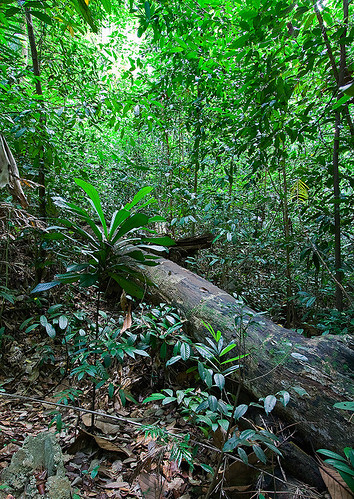
(Photo by 15Bit)
I find it sad when Singaporeans overlook and dismiss our nature areas as being unimportant or boring, or loudly proclaim that there's nothing to see. But then I think about how sad it must be for these people to look at these places with blinkers over their eyes. Hopefully, through the tireless efforts of concerned individuals and groups, their eyes will be opened someday, and they will come to realise the beauty and value that was in front of them all along.